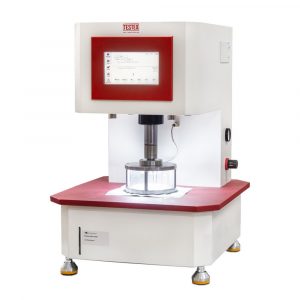Purpose of Test
This test evaluates the resistance of a fabric to water penetration caused by hydrostatic pressure. This test is used for all kinds of fabrics, whether they are water-resistant or water-repellant.
The test results for this method depend on the water repellency of the following materials used:
- Fibers
- Yarns
- Fabric construction
- Fabric finish
The test results for this water resistance method may not be the same as the results for other methods like resistance to water spray or rain. The test procedure doesn’t use restraint. If restraint is required for testing, use the AATCC TM208 Test Method for Water Resistance: Hydrostatic Pressure Using a Restraint.
Terminology Defined
Hydrostatic pressure – The exerted pressure of a fluid at rest caused by the force of gravity.
Water Resistance – The fabric’s resistance to water wetting and penetration.
Water Repellency – The fabric’s resistance to water wetting.
Hydrostatic Pressure Tester – The apparatus used for testing the hydrostatic pressure for fabrics.

Test Method
Materials Used for Test
- Test specimens
- Hydrostatic pressure tester/Hydrostatic head tester
- Water (Distilled or De-Ionized)

Testing Procedure
One surface of the test specimen will be tested for hydrostatic pressure at an increasing and constant rate until leakage occurs in three points.
Test Procedure (Summary)
- Part 1: Preparing three fabric specimens. The test requires three fabric specimens cut into squares. The ideal size should be 200x200mm. The specimens will be handled with utmost care to avoid contamination and folding. The technician will mark the surface to be tested with “TEST” on the corners of each fabric specimen.
- Part 2: Clamping on hydrostatic pressure tester: The technician dries the clamping surface and attaches the fabric specimen. The surface to be tested must face the water.
- Part 3: Using the hydrostatic pressure tester/hydrostatic head tester: The hydrostatic pressure tester is run and the technician records the hydrostatic pressure when water droplets penetrate fabrics in three unique points.